|
Amita Institute's Recent Research Work at Yellowstone National Park (USA) con't
PART II
Further studies were conducted on June 30th, 2012, when the R&D team had to return to Yellowstone to ascertain spring water needed to continue our studies and take records under the microscope. When passing by Old Faithful geyser, David noticed that YNP geysers attracted much attention from tourists from all over the world and from the US every year and he was curious to find out what exactly what was attracting their attention and whether it inflicts (has) influence upon Humans. Fafa and Yanyan observed that geysers emit signals, which in Humans, form a binding electromagnetic field at the gastrointestinal and sensory / perception system containing intense internal destructive radiation. These systems in human largely consists of extremeness (anger, aggression, persistence, judgement) cognitum qualities, which in essence can provoke Humans to have conflicts and war, via feeding these cognitum qualities directly to eyes, spine and abdomen. As a whole, these stimulate weight gain / obesity, and psychological barrier in thinking flexibility (stubborness). Via Multi-spectral visual perception, scanners identified that Octopus Spring, where CGMS and CPGMS transduction effect had taken place, was accessing (accessing point of) the geysers already.
| |
.jpg) |
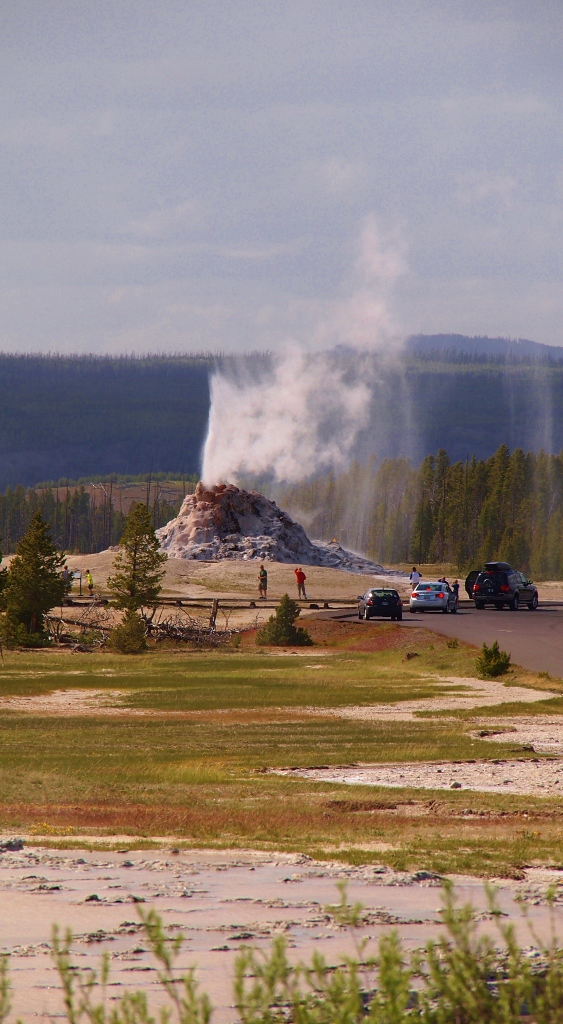 |
|
| |
Geysers of Yellowstone National Park: (left) Old Faithful and (right) Great Fountain Geyser. |
|
Realising the impact of spring water on bacterial life and then also Humans, the R&D team further investigated what actually triggered bacterial life located in spring water in the first place.
What is conventionally understood is that spring water is derived from the percolation of precipitation (rain and snow) through many layers of rocks, reaching the layer closest to molten magma in Yellowstone's caldera region (the region where molten chambers extend very close to the earth's crust surface). This is composed of volcanic rhyolite, and is where the spring water is heated up, pushed upwards, recollected in underground network of streams, and pushed up to the surface íV where they emerge at fumuroles, springs, geysers and mudpots. So what change is taking place in the nature of the water from non-life-bearing rain to life-bearing spring water?
| |
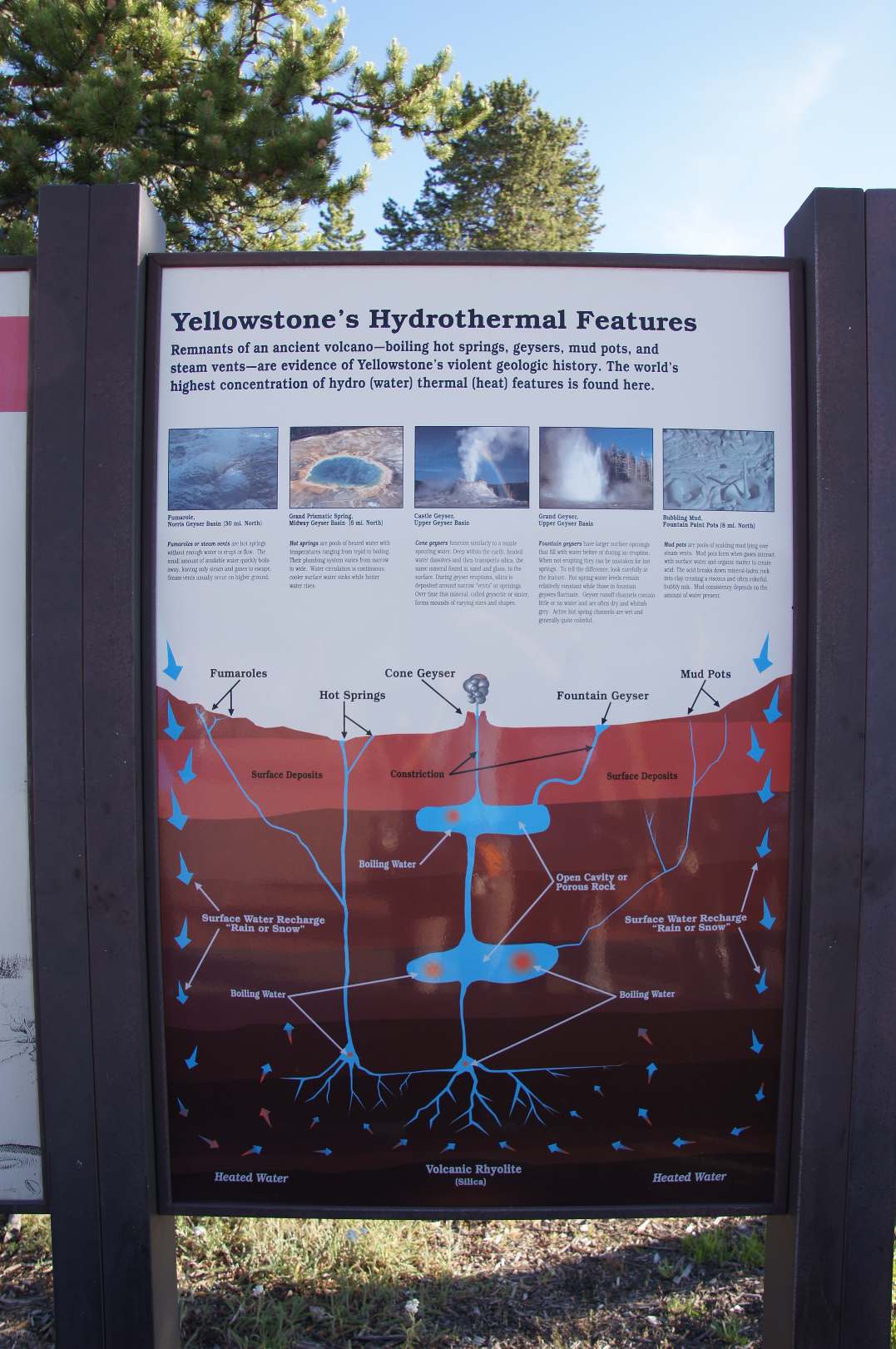 |
.jpg) |
|
| |
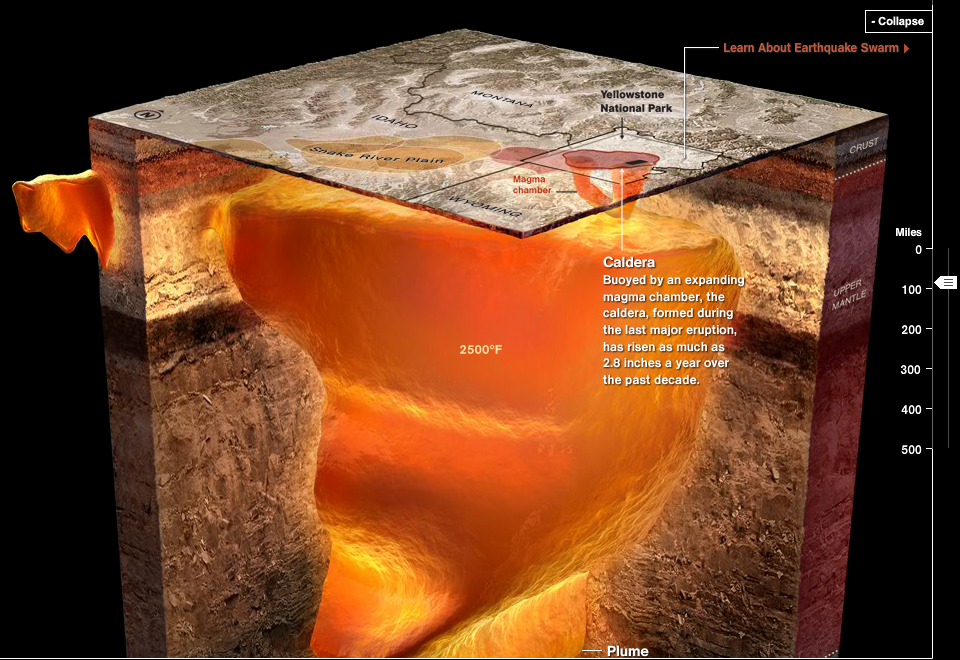 |
|
| |
(left) Spring water formation diagram photographed from a sign in Yellowstone adjacent to Old Faithful Geyser. (top right) Bubbling spring water expelled from underground hydrothermal networks. (bottom right) National Geographic's diagrammatic representation of the magma plume and chamber under Yellowstone, extending closest to the surface crust at Yellowstone's caldera. |
|
In our study we observed that precipitation initially bears very little qualities, yet as it percolates down, there is communication and interaction with the rocks; water has instigation with the rocks. As the water and the rock interacts, where the rock cognitum values are of aggression, individuality and data (which was later identified to be similar to the cognitum signature of nickel iron alloy), the waves of the rocks and water interferes and propagates with one another forming a resultant waveform, analogous to the wakes formed by a boat in the sea.
| |
 |
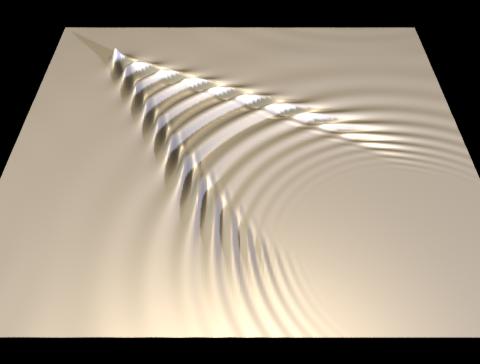 |
|
| |
Analogy of interference and propagation of water waveforms and rock wave forms forming primordial bacteria: (left) a concentric waveform (e.g. emitted by of a rock), is combined with a moving object with a second waveform (e.g. that of the water, not shown), creating (right) v-shaped ripples (wakes, e.g. bacterial life), which is much more complex than the two initial individual waveforms. |
|
In the cognitum value interpretation, this resultant waveform represents a strong sense of anxiety, aggression, very small amounts of data and a very slight judgmental / individuality value. As rocks and water both have a stable waveform, they both represent as a physically stable state. But this new waveform, consisting of these before mentioned cognitum qualities, is very unstable and much more complex than the stable waveforms of rocks and water; hence, it cannot be represented by a very stable material but something of a very soft and flexible texture is formed (for the very first time) íV a cell is thus formed, which is the primordial bacteria(um?), which is much more complex than rocks and water, and is everchanging (therefore is organic).
The instigation continues as the water percolates downwards to the volcanic rhyolite, where the volcanic rhyolite's cognitum values interfere with the water's waveform. This is also where water is closest to the magma from the earth core, which bears the richest source of nickel iron alloy. The magma with its cognitum values also propagates with the water's waveform. Other than bearing the cognitum values of anxiety, data and slight judgemental values, the resulting waveform it also has an outward emitting consciousness, which explains why bacteria replicate so rapidly.
| |
.jpg) |
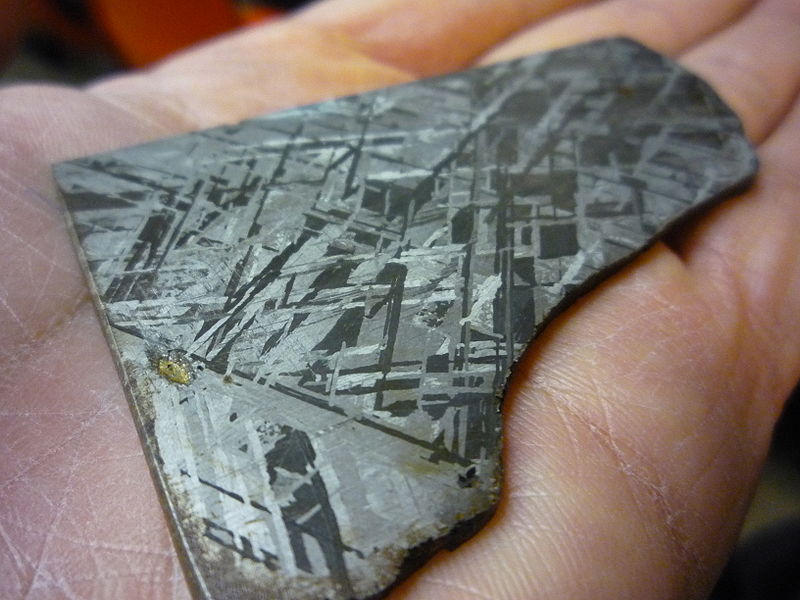 |
|
| |
(Left) Rocks of hot springs have the cognitum signature of (right) nickel iron alloy which are a major constituent of the magma of Earth's core. This is what instigates with the water's cognitum value, propagating life. |
|
Yellowstone, specifically the caldera, is such a special place because it is where the magma reaches closest to the surface crust of the earth, and where the spring water can reach closest to magma. That is why the R&D team purposely traveled 12,000 miles from Hong Kong to Yellowstone National Park: to transduce CGMS and CPGMS encoding to the bacteria and spring water, followed by induction to the entire caldera underground hydrothermal network, and down to the the magma hence to the core of the earth; all in the hope to change the detrimental qualities embedded in life since the beginning íV in the hope to make our life now better.
| |
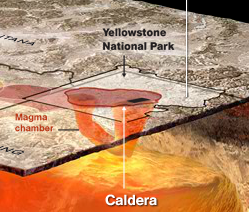 |
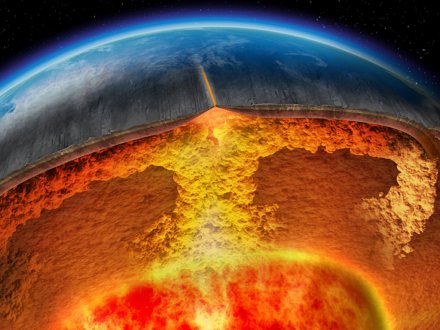 |
|
| |
(Left)The Yellowstone caldera is where (right) magma plumes that are connected to the magma core of the Earth, are able to reach closest to the Earth's crust. It is the biggest caldera on Earth, which explains why Yellowstone houses half of the Earth's terrestrial hydrothermal features. |
|
-end-
|